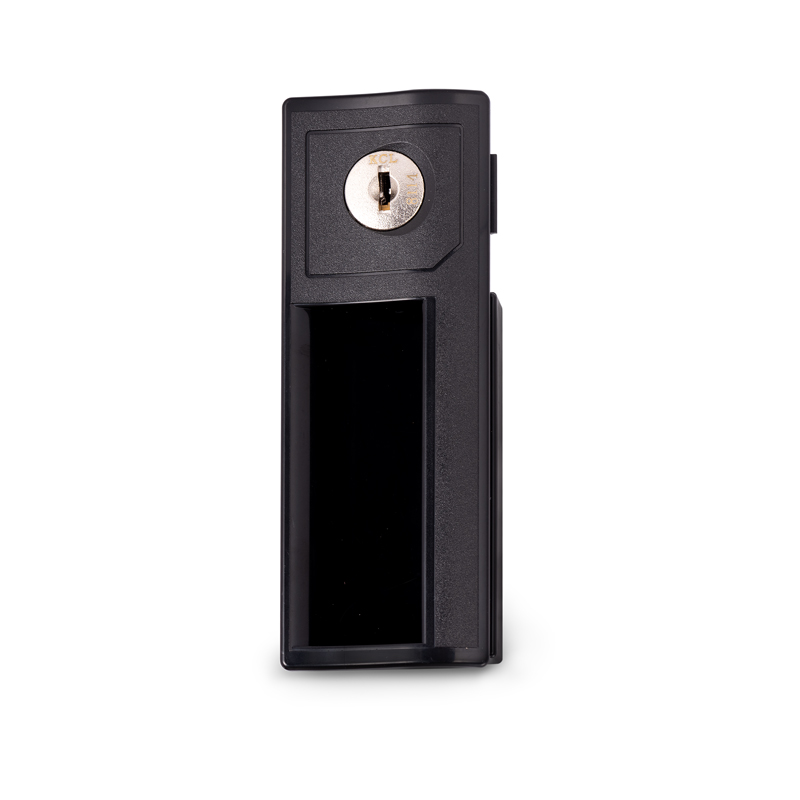Climate and environmental factors can significantly impact the performance and longevity of cabinet drawer locks. Here are some considerations and preventive measures:
Humidity: Opt for cabinet drawer locks made from 316 stainless steel, renowned for its exceptional resistance to corrosion in high-humidity environments. Conduct regular humidity level assessments within the storage space and install dehumidifiers if needed. Apply a specialized corrosion-resistant lubricant quarterly to ensure optimal performance.
Extreme Temperatures: Select cabinet drawer locks designed to operate in temperatures ranging from -40°F to 140°F (-40°C to 60°C). Consider locks with thermal insulation layers to protect internal components from extreme cold. Implement a climate control system to regulate temperatures within the storage area and conduct periodic temperature stress tests.
Dust and Debris: Install cabinet drawer locks featuring double-sealed mechanisms and precision-engineered gaskets to resist dust penetration. Implement a rigorous cleaning schedule, including the use of specialized anti-static brushes and compressed air systems. Introduce positive air pressure systems to prevent the infiltration of external particles.
UV Exposure: Choose cabinet drawer locks with UV-resistant coatings and materials, specifically those tested to withstand a minimum of 1,000 hours of direct sunlight exposure. Install UV-filtering window films or shields to mitigate UV rays. Conduct quarterly inspections for any signs of material degradation due to UV exposure and apply UV-protective treatments.
Chemical Exposure: Opt for locks with epoxy-coated finishes or chemical-resistant polymers. Develop a comprehensive chemical management protocol, including regular risk assessments. Provide chemical-resistant gloves and aprons for maintenance staff. Establish designated chemical storage areas away from sensitive equipment, and conduct routine chemical spill response drills.
Saltwater Exposure: Select locks with marine-grade coatings and materials such as Nitronic 50. Implement a strict rinsing schedule with fresh water for all locks exposed to saltwater. Apply a sacrificial anode system to minimize corrosion risk. Conduct bi-annual inspections, paying close attention to keyways and moving parts prone to saltwater ingress.
Vibration and Shock: Install cabinet drawer locks with reinforced casings and internal shock-absorbing components. Utilize advanced mounting solutions, such as resilient mounts and vibration isolators. Employ continuous vibration monitoring systems and conduct periodic dynamic stress tests. Integrate lock assemblies with shock sensors for real-time impact detection.
Dirt and Grit: Choose locks with labyrinthine designs, utilizing multiple seals and debris channels. Implement a comprehensive cleaning strategy, including regular power washing for outdoor installations. Install air purifiers equipped with HEPA filters to minimize airborne particulate matter. Conduct bi-monthly inspections for signs of abrasive wear and seal integrity.
Freezing Conditions: Select locks with low-temperature lubricants and materials rated for operation in temperatures as low as -40°F (-40°C). Install additional insulation around lock assemblies and enclosures. Conduct quarterly freeze-thaw cycle tests to simulate extreme conditions. Implement a proactive anti-icing strategy, including the use of heated enclosures or electrical trace heating.
Sealed Enclosures: Choose cabinet drawer locks with IP68-rated seals for exceptional water and dust resistance. Conduct quarterly seal integrity tests, including submersion and pressure testing. Implement an automated seal replacement schedule based on the manufacturer's recommended service life. Install redundant seals and gaskets for critical applications, ensuring a fail-safe design.
E501 SLIDING DOOR LOCK

E501 SLIDING DOOR LOCK



 English
English 中文简体
中文简体
















